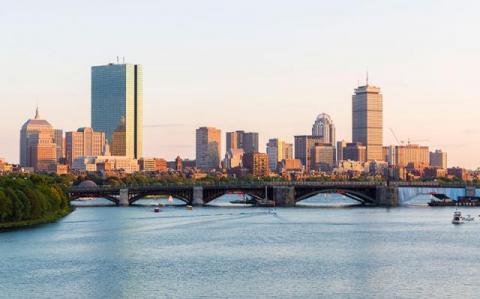
Uploaded on 2017-05-09
1. Here are the results of Boston and New York that I found: -Boston is 15.0 degrees hotter in the city than in nearby rural areas Average 1.3 degrees and 5 more days above 90 degrees than in nearby rural areas. -New York is up to 20.0 degrees hotter in the city than in nearby rural areas Average 2.7 degrees and 1 fewer day above 90 degrees than in nearby rural areas. 2. Which are the main UHI effects that you can identify in your area? To answer this question, let me compare three cities in New England, Boston, Worcester, and Harvard Forest. Worcester is 50 miles and Harvard Forest is 65 miles inland from Boston. Temperature differences, the differences between coastal and non-coastal locations, and small-scale variability of weather patterns in them reflect the urban heat-island in Boston as a denser city. I believe that Boston with it’s cold climates may actually benefit from the wintertime warming effect of heat islands. Warmer temperatures can reduce heating energy needs and may help melt ice and snow on roads. However, In the summertime, it may experience the negative effects of heat islands like any other cities. 3. Which are the measures you would propose? I believe urban designers can play a crucial role on this subject. Currently, the design of urban buildings does not account for site-specific microclimates due to a lack of observable data from operational weather stations. Also, we could promote the implementation of green coverage on buildings, which could be encouraged by tax incentives programs for property owners and developers. 4. Is UHI effect concerning policy making in your area? The Boston Transportation Department and other Boston city agencies have developed Complete Streets guidelines that incorporate green infrastructure components such as permeable pavements and street trees to address impacts of climate change including increased heat and precipitation. Also, “Complete streets” are designed to create more sustainable transportation networks by encouraging multi-modal travel options and enhancing the natural environment within the public right-of-way. By promoting the use of green infrastructure, the City can help reduce the urban heat island effect and mitigate flooding. The guidelines are intended to guide neighborhood redevelopments and new construction, and projects are already underway that incorporate green infrastructure methods for managing the impacts of climate change. For example, construction on the Peabody Square project in Dorchester, MA was completed by MassDOT in September 2012, and included the installation of pervious sidewalks and rain gardens for stormwater management.